Image Credit: David Rabkin, Boston Museum of Science
Image Credit: David Rabkin, Boston Museum of Science An installation of the Swift Wind Turbine at the Boston Museum of Science. Swift turbines were developed by Renewable Devices in Scotland and are manufactured in Michigan. The Aerovironment turbines can be seen in the background.
Image Credit: David Rabkin, Boston Museum of Science
At least in our neck of the woods, wind power is very much in the news these days. The Vermont legislature is debating whether to institute a three-year moratorium on what detractors refer to as “industrial wind power,” and debate is raging in the nearby towns of Windham and Grafton, Vermont about a potential wind farm. I figured I should weigh in.
As readers of this blog know, I am a strong proponent of renewable energy, including wind power. But I’m also not shy about pointing out situations in which wind power doesn’t make sense. This week I’m going to focus on those misguided or less attractive wind power applications. Next week I’ll cover where we should be heading with wind power and discuss projects like the one proposed for Windham and Grafton.
Don’t put wind turbines on buildings
Wind turbines almost never make sense on buildings—even tall buildings. When I started researching “building-integrated wind” a few years ago for my newsletter, Environmental Building News (EBN), I thought I was going to write an article that painted a positive picture of putting wind turbines on top of buildings. After all, tall buildings can get the turbines up high where it’s windier, and like rooftop photovoltaic (PV) systems, the power is generated right where it will be used.
But the more I dug into it, the more clear it became to me that building-integrated simply does not make sense.
First, wind turbines installed on buildings have to be small so that they won’t affect the building’s structure, so the power-generation potential is limited.
Second, wind turbines generate significant noise and vibration. That can be okay when the turbines are a quarter-mile away, but on a building it can be a real problem—particularly with a steel-framed commercial building that transmits noise and vibration throughout the structure.
Third, dealing with turbine installations on buildings increases costs significantly. Special attachments are required, and loads may have to be distributed downward through the building.
Fourth, even if the economics work out it’s hard to believe that insurance companies would embrace the installation of wind turbines on buildings. I suspect that insurers would raise insurance rates significantly, due to the increased liability—or perceived liability—of blades flying off wind turbines or rooftop towers collapsing and damaging roofs. Insurance rates wouldn’t have to rise very far for those costs to exceed the value of the generated electricity.
Finally, it turns out that all that wind swirling by tall buildings is highly turbulent. Wind turbines don’t like turbulence; they do much better with like laminar wind flow. Some types of wind turbines apparently do better with turbulence than others, but most don’t perform well in such conditions.
The lack of performance data
When I was researching my EBN article, I spent weeks trying to track down performance data on building-integrated wind turbines, but could find almost none. I knew that that data was being collected by manufacturers (up to a dozen manufacturers were producing wind turbines specifically designed for installations on buildings), and the fact that they didn’t want to share it made me suspicious that it was far worse than those manufacturers were claiming.
With a lot of anecdotal evidence of extremely bad performance of building-integrated wind turbines, I got more and more discouraged about the practicality of putting turbines on buildings, and I ended up titling my May, 2009 EBN article “The Folly of Building-Integrated Wind.” Wind turbines don’t belong on buildings.
After my article came out, I finally tracked down some performance data from the Boston Museum of Science, which installed building-integrated wind turbines from five different manufacturers. As I suspected, the performance was terrible—far lower than manufacturer claims. You can learn more about the Museum of Science wind power experiments here.
With ground-mounted wind turbines, smaller is not better
Even when we stick with ground-mounted wind turbines, the performance and economics of small machines (a few tens of kilowatts (kW) of rated output and less) is usually very poor. With wind turbines there is a huge economy of scale. Home-scale wind power rarely makes good economic sense—except in locations where there is strong, steady wind.
I’m disappointed by this. I would really like to think that I could install a cost-effective wind turbine at my home, but I can’t. A good site for wind power—where there a strong 15 mph wind much of the time—wouldn’t be a place you’d want to live. And with small wind turbines you can’t put them too far from the place where the power will be used or fed into the utility grid. So even if your property rises up to a ridge, putting a small wind turbine there may not be feasible in terms of getting the power down to your house or feeding it into the power grid.
Studies I’ve examined where actual performance of small, ground-mounted wind turbines has been collected, the measured output has been significantly below the predicted output. Plus, the maintenance requirements are significant. Compared with the alternative—arrays of PV modules that just sit there with no moving parts—it’s just a whole lot more difficult to justify small wind. The economics usually don’t work.
Next week, we’ll look at where wind power can make sense: much larger wind turbines that can be aggregated into wind farms.
BTW, I’ll be presenting an all-day, pre-conference workshop, Skills for Building Resilient Communities, with three colleagues, Don Watson, FAIA, Joel Gordes, and Maureen Hart, at the Northeast Sustainable Energy Association’s annual Building Energy Conference on Tuesday, March 5th. Details can be found here.
Alex is founder of BuildingGreen, Inc. and executive editor of Environmental Building News. In 2012 he founded the Resilient Design Institute. To keep up with Alex’s latest articles and musings, you can sign up for his Twitter feed.
Weekly Newsletter
Get building science and energy efficiency advice, plus special offers, in your inbox.

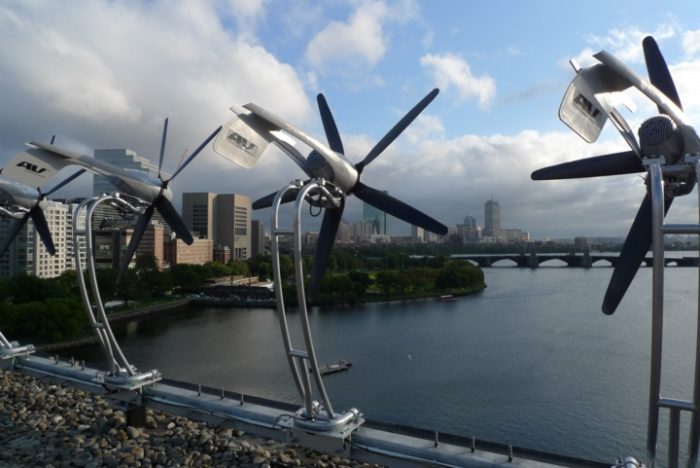




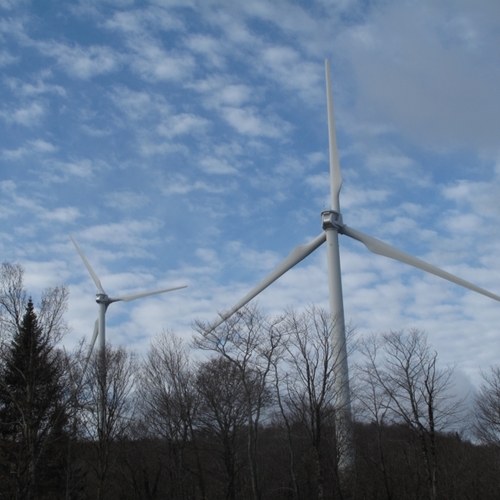
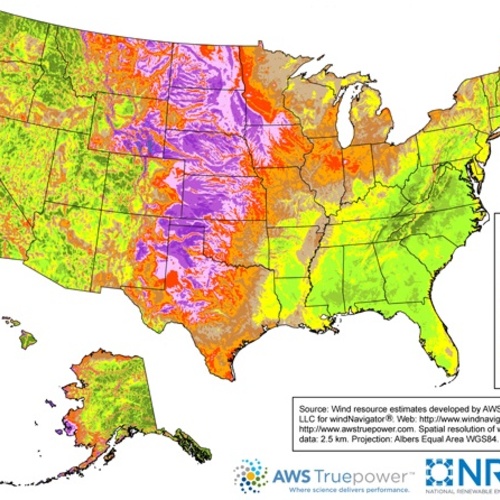
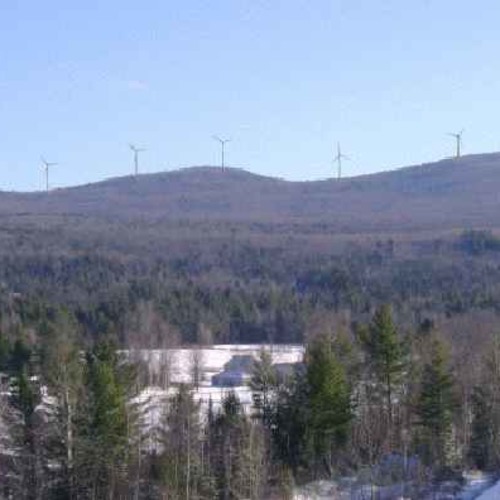
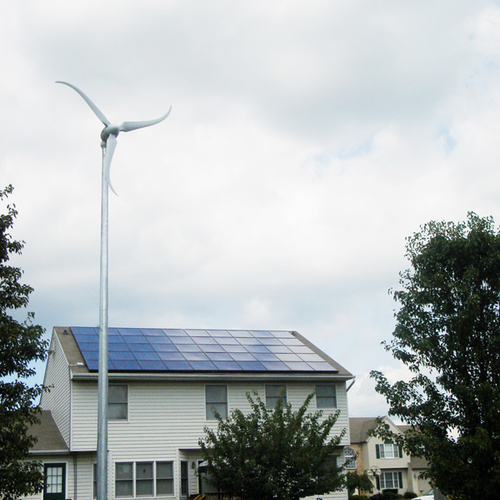






5 Comments
Nice info.
Never realy took
Nice info.
Never realy took time to read about wind turbines as they make no sense here in the low inland,
thi is a good base info on small turbine, and i will invest more time in learning about it.
With the price of PV going down and down, it will get very hard to suggest any other technologies in the next decades... the capacity of a system to produce power linearly is pretty important for deciding the destination and usage of the power, small PV array does this perfectly.
That pretty much sums up
That pretty much sums up everything I've heard about Small Wind. I'd rather have a silent renewable system whose sole moving part might be an inverter's cooling fan, and even those are passing out of style.
This article gives me an ice cream headache
There's so much old information and downright misinformation here, I don't know where to begin.
The standard propeller-type blades are, granted, highly inefficient when scaled down for home use, but there are several new designs such as the Darrieus, Savonius and HAWT designs that catch more wind at lower speeds. Some more radical new designs like the Energy Ball claim to be quieter than background noise levels while generating sufficient electricity to offset 20-60% of an average home's electrical needs.
Then there's the massive state and local initiatives that make the cost a non-issue. The state of Maryland, for example, gives homeowners up to a $6,500 incentive for wind energy systems. That, plus the 30% federal energy credit, can make a $10,000 cost turn out to be more like $500, all told.
If you're a homeowner or a small business owner researching wind energy, I would take this article with an entire shaker of salt.
Respose to Jeff Woiton
Jeff,
You're wrong about vertical-axis wind turbines and other "new designs." The answer has nothing to do with engineering; it has to do with physics. It is very hard to change the laws of physics.
Wind expert Mick Sagrillo does a good job of explaining the physics in his essay, The Myths & Mysticism of Vertical Axis Wind Turbines.
Sagrillo wrote, "Basic fluid dynamics tells us that the power available in the wind is a function of the cube of the wind speed. Both ground drag and turbulence enormously diminish the power available at the ground level or around buildings to a point where there is actually very little extractable. It is solely due to this mathematical equation that wind turbines are mounted on towers, not blade clearance. And the taller the tower the better. Even wind turbine designers have to abide by the current laws of physics."
Don't take my claims with a grain of salt...take their's...
Jeff,
I don't have a pony in this race, I'm only looking for honest information on actual performance, and that's very hard to come by. I take the claims of the manufacturers of those Darieus, Savonius, and horizontal-axis wind turbines with a big gain of salt--and I encourage others to do so as well.
If you read the power curves of these wind turbines and compare that with average wind speeds in most areas, I suspect you will find that despite the huge financial incentives to install them, they don't make economic sense. And as a taxpayer who is subsidizing the installation of those systems, it frustrates me greatly that manufacturers can get away with selling equipment that will generate just a tiny trickle of electricity in most conditions. Most homeowners don't read or understand power curves.
I see that you represent a wind turbine in the Seattle area (the Energy Ball made by Northwest Windpower). I hadn't seen that system, but I see from the company's website that it's rated at 2,500 watts. From the power curve I downloaded, I see that you need a 29 mph wind to generate the full 2,500 watts (and there's a footnote that the power curve was generated in a wind tunnel and your results may differ).*
From the power curve: at a 13 mph wind (a more reasonable level--and still a reasonably strong breeze), that Energy Ball is projected to only produce about 500 watts. From studies I have read of other small wind turbines where the measured performance has been compared to the predicted performance (based on measured wind speeds and power-curve information), real-world performance has been far below the predicted performance.
I would love to find a small wind turbine that works well at low speeds, deals well with the turbulent wind flow that is prevalent around buildings, and makes economic sense. Maybe the Energy Ball will be this product. But if I were you, I would do some really careful homework before buying one of these systems or putting your reputation on the line in selling them to hopeful homeowners.
* from the fine print on the Energy Ball power curve:
"Disclaimer: The above power curve was produced inside a wind tunnel at Kirsten Wind Tunnel (UWAL), University of Washington, using the new blade design. No adjustments were made for air density or pressures. Testing results were not monitored or approved by a third party AWEA or SWCC testing agency. Actual results may be different in open air testing. Although, the testing is was conducted and results were produced as indicated in this power curve, the reader is cautioned in relying on this curve until final power curve certification is complete and accepted by SWCC."
Log in or create an account to post a comment.
Sign up Log in